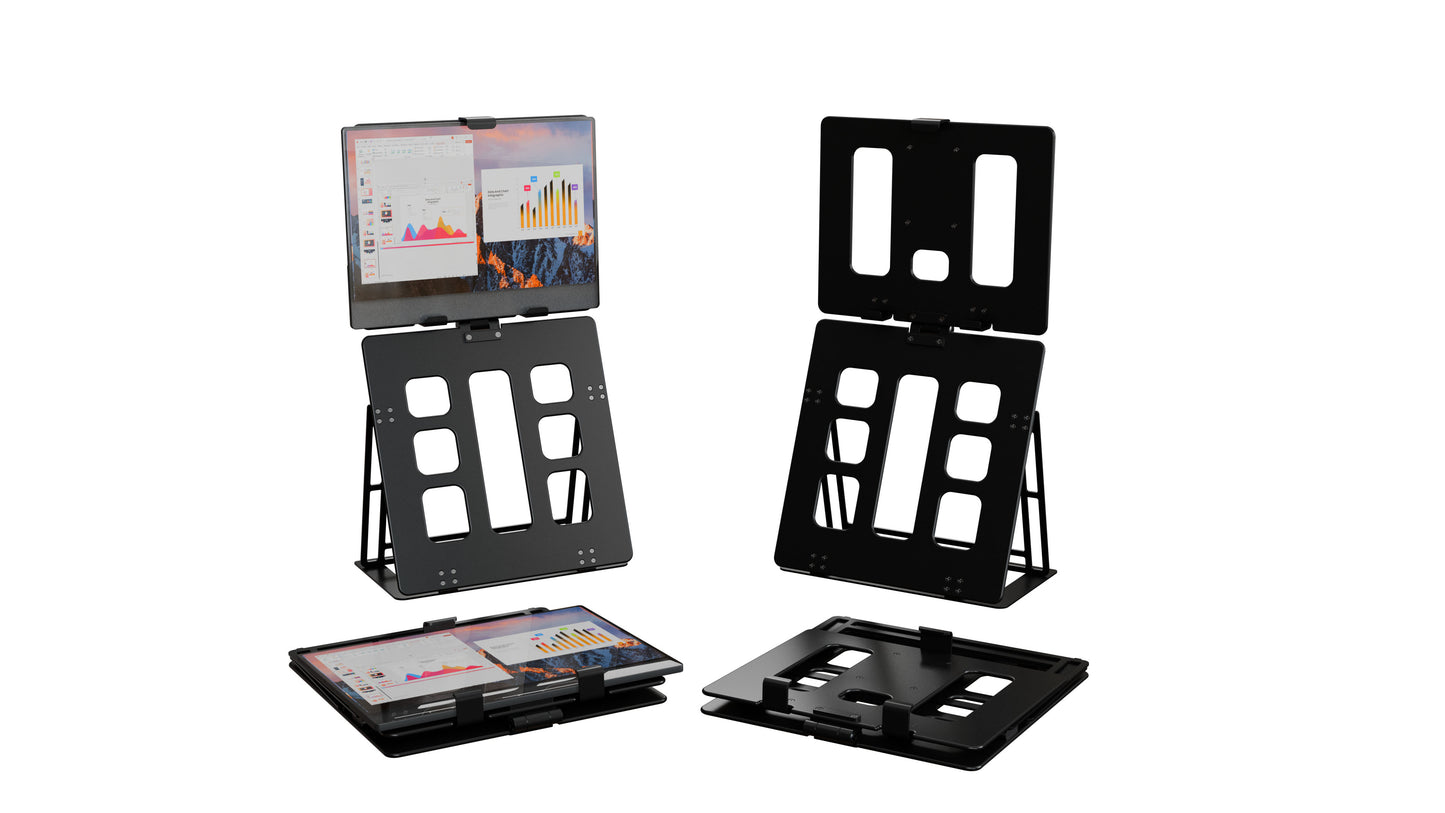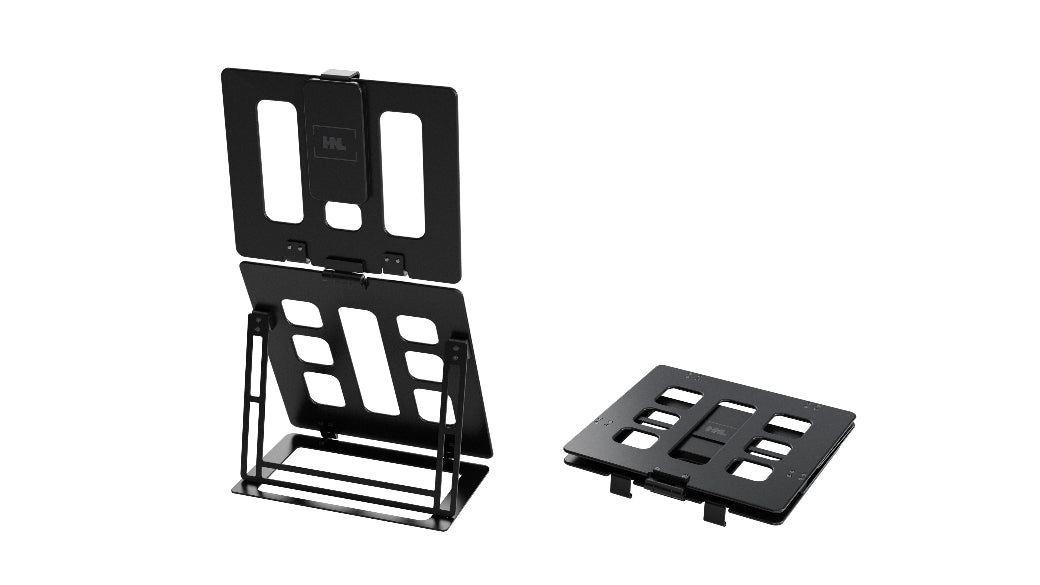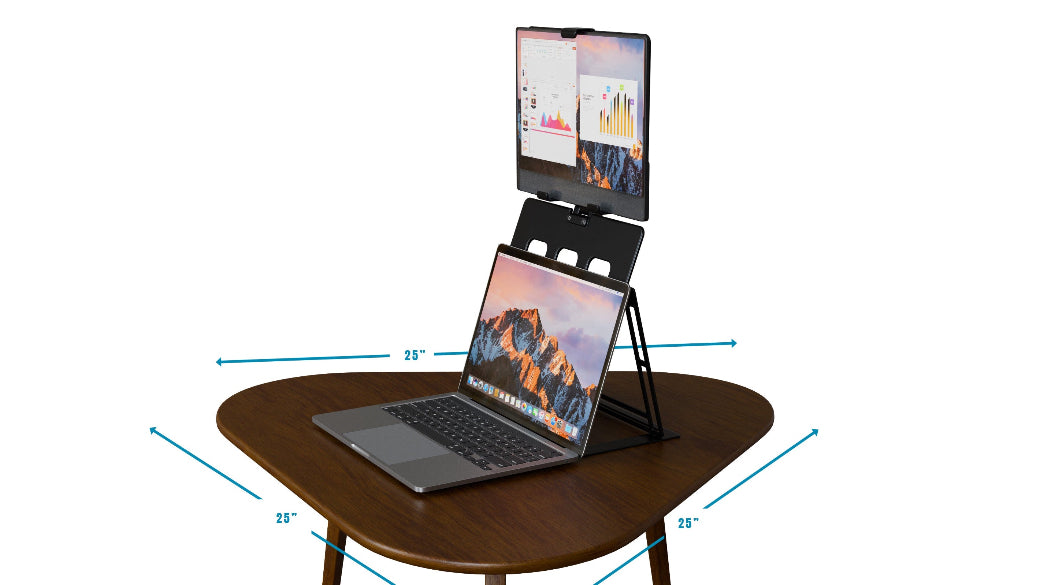
Workspace Control Enhances Executive Confidence and Performance
Share
Leadership is not only about decisions made in the boardroom—it’s also shaped by what surrounds you when you make them. As CEOs and directors strive to operate at peak performance, workspace control has become a strategic asset. It influences clarity, energy, and even how confidently you make decisions. A carefully designed executive environment does more than look professional—it sets the tone for authority, focus, and mental resilience.
At HNL Stands, we believe workspace design is a critical part of a leader’s success system. Our stand solutions are crafted to elevate both functionality and executive presence, helping leaders align their surroundings with their strategic mindset.
Today’s article dives deep into how a structured and personalized executive productivity setup helps align leadership behavior with inner confidence, supporting powerful and consistent performance.
The Psychology of Workspace Control
Controlling your environment is more than a preference—it's a proven psychological tool to enhance leadership effectiveness.
Workspace as a Reflection of Mental Authority
Your physical workspace is a direct projection of your mental state. A cluttered, chaotic environment can subconsciously signal confusion, while a clean, intentional setup radiates clarity and authority. When executives take charge of their workspace layout, design, and functionality, they’re not just optimizing space—they’re asserting control, which psychologically translates into increased self-trust and mental readiness.
This concept is supported by embodied cognition theory, which suggests that the environment can influence thoughts and emotions. Leaders who walk into a space they’ve curated are constantly reminded of their intention, control, and capability.
Environmental Control and Executive Well‑Being
Having the ability to modify your workspace—adjust lighting, switch seating, or reorganize layout—reduces stress and boosts well-being. Research confirms that control over one’s surroundings increases happiness, lowers cortisol (the stress hormone), and leads to measurable productivity gains.
For leaders constantly navigating uncertainty, this autonomy creates a psychological anchor. Instead of reacting to chaos, they lead from a place of internal and external order.
Designing an Executive Productivity Setup
A high-performing executive doesn’t just “use” their workspace—they design it as an extension of their leadership.
Avoiding Common Layout Mistakes
While many executives focus on tools and technology, they often overlook poor design habits that silently hinder performance. Here are some pitfalls to avoid—and how to counteract them:
- Facing a blank wall: reduces creativity and spatial awareness.
- Poor lighting: leads to fatigue and mental fog.
- Lack of vertical storage: clutters the surface and distracts focus.
- Ignoring ergonomics: causes discomfort and lowers concentration.
Strategic workspace planning can correct these issues, empowering leaders to think and act with intention.
Workspace Control as an Organizational Signal
Beyond function, an executive’s workspace communicates values to teams and stakeholders. A clean, focused environment silently states: “I am in control. I know where I’m going.” It establishes psychological authority that reinforces leadership presence.
This becomes especially important in hybrid work models or open-office settings, where workspace visibility subtly shapes perception.

Linking Workspace Control to Performance Psychology
Let’s take the conversation deeper: how does a controlled workspace affect the executive mind?
Enhancing Adaptive Performance
Top-performing leaders need to think fast and pivot often. Their brains must be trained for adaptive performance—handling change without losing momentum. A dynamic workspace setup—adjustable desks, modular furniture, dual zones for deep work and collaboration—supports this mental flexibility.
Workspace control fosters neurological efficiency. When the brain isn't distracted by environmental noise, it allocates more energy toward analysis, empathy, and foresight.
Mental Space for Strategic Thinking
Many executives fall into a trap of constant doing. Yet, elite leadership also requires space to think. Your environment can either encourage or stifle reflection. A clutter-free corner, a standing desk with a view, or a digital-free zone can serve as a sanctuary for strategic insight.
Creating physical space becomes a metaphor for creating mental space—essential for innovation, clarity, and long-term visioning.
Workspace Habits of Leaders
Studying elite CEOs reveals recurring workspace patterns—and they’re not accidental.
Intentional Environment, Intentional Leadership
Successful leaders arrange their workspace to maximize productivity. These include:
- Keeping only tools for today’s goals on the desk
- Using symbols (like framed values or personal mementos) to reinforce purpose
- Positioning themselves to command their space—never tucked in a corner
These behaviors aren’t just efficient—they reinforce leadership identity and boost executive presence.
Workspace Control Enhances Confidence and Decision-Making
The more control executives have over their space, the more confidently they act. This isn’t superficial—it’s rooted in neuropsychology. Controlled environments help reduce cognitive overload and lower decision fatigue, making choices clearer and faster.
Leaders who feel grounded in their surroundings make bold moves, speak with conviction, and command attention.
Practical Strategies for Executives
Turning workspace control into a leadership tool starts with small but intentional steps.
- Make It Your Space—but Make It Functional
Don’t aim for showroom beauty—prioritize flow, energy, and focus. Choose colors and textures that calm or energize you. Remove anything not relevant to your current strategic direction.
Your space should speak your vision—not yesterday’s to-do list.
- Design for Flexibility
Success requires switching between roles: decision-maker, visionary, coach. Your workspace should evolve with you. Add movable elements—standing desks, mobile whiteboards, adjustable lighting—that allow fast transitions.
Flexibility in your space encourages agility in your mind.
- Cultivate Mental Spaciousness
Create a visual “pause” in your environment. This could be a simple plant, a clear desk corner, or artwork that inspires long-term vision. Such elements give your mind a chance to breathe, refocus, and return stronger.
- Regularly Audit Your Setup
Just like a business strategy, your environment needs reviewing. Ask:
- What in my space still serves me?
- What clutters my thinking?
- What could better support my goals?
- Even small shifts—replacing a chair, repositioning your monitor—can radically improve your mental clarity and performance.
Workspace Elements and Their Psychological Impact
|
Workspace Element |
Description |
Psychological Benefit |
|
Adjustable Desk |
Sit-to-stand flexibility for energy flow |
Boosts focus and physical engagement |
|
Natural Light Access |
Windows or daylight lamps |
Enhances mood, reduces fatigue |
|
Decluttered Surface |
Only essentials kept visible |
Reduces stress, sharpens focus |
|
Personalized Decor |
Motivational or meaningful items |
Reinforces identity and motivation |
|
Quiet Reflection Corner |
A minimalist space for thought |
Encourages creativity and long-term thinking |
|
Ergonomic Seating |
Proper posture and comfort |
Lowers physical distraction, improves endurance |
|
Visual Zoning |
Different areas for different tasks |
Supports task switching and mental clarity |
Conclusion
For high-performing executives, the workspace is not just a place—it’s a leadership engine. Controlling it means taking charge of not only productivity but also perception, presence, and power.
Whether it’s through improved lighting, thoughtful design, or symbolic intention, your workspace can reinforce your authority and elevate how you think, act, and lead. The connection between workspace control and leadership is clear: when you own your space, you own your performance.
In the end, confident leadership starts with environmental clarity. So ask yourself: does your workspace serve your mission—or distract from it?
Ready to elevate your executive environment? Contact HNL Stands today to explore premium workspace solutions designed for leaders like you.











